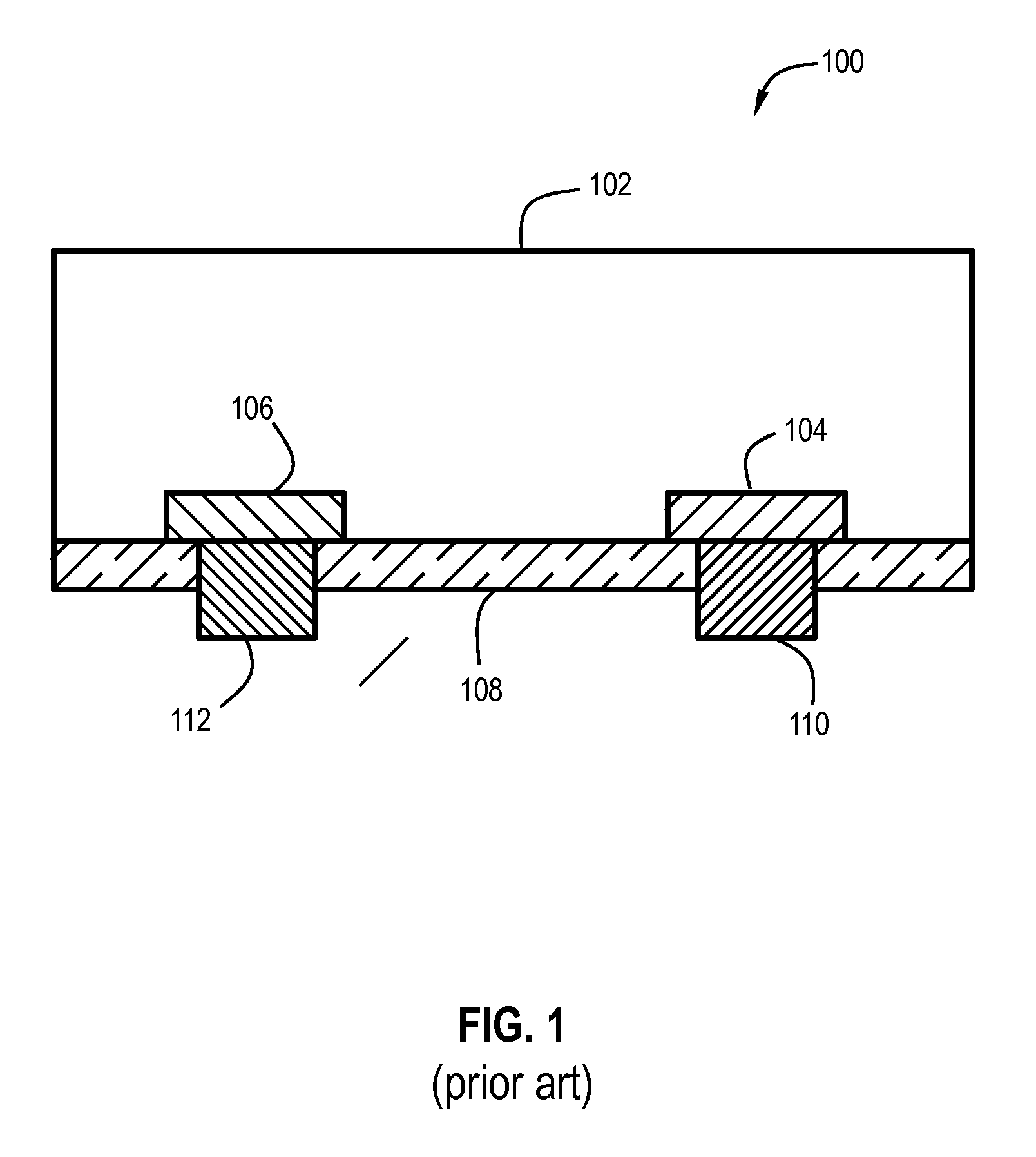Fixture for Drilling Vias in Back-Contact Solar Cells
- Summary
- Abstract
- Description
- Claims
- Application Information
AI Technical Summary
Benefits of technology
Problems solved by technology
Method used
Image
Examples
Embodiment Construction
[0026]The emitter-wrap-through (EWT) silicon solar cell is a back-contact solar cell without any grids on the front surface. Instead of busbars, the EWT solar cell has many printed silver bondpad areas on the rear surface that will be the contact points with the module backsheet. The fabrication of an EWT cell uses a laser to drill holes in the silicon substrate. The emitter (n+ junction on the surface of the p-type Si substrate) is diffused on the front surface, rear surface, and on the surfaces inside the holes—thereby forming a conductive channel (“via”) from the front surface to the rear surface to enable the back-contact cell design. The emitter has limited conductivity, with typical values between 30 and 150 ohms / square. A high density of vias (typically between 0.5 and 5 holes per mm2) is therefore necessary to limit the resistance losses due to current flow in the front emitter and in the vias. A 156-mm by 156-mm EWT Si solar cell may require up to 120,000 holes. Creating a ...
PUM
| Property | Measurement | Unit |
|---|---|---|
| Distance | aaaaa | aaaaa |
| Distance | aaaaa | aaaaa |
| Electrical resistance | aaaaa | aaaaa |
Abstract
Description
Claims
Application Information
 Login to View More
Login to View More - R&D
- Intellectual Property
- Life Sciences
- Materials
- Tech Scout
- Unparalleled Data Quality
- Higher Quality Content
- 60% Fewer Hallucinations
Browse by: Latest US Patents, China's latest patents, Technical Efficacy Thesaurus, Application Domain, Technology Topic, Popular Technical Reports.
© 2025 PatSnap. All rights reserved.Legal|Privacy policy|Modern Slavery Act Transparency Statement|Sitemap|About US| Contact US: help@patsnap.com



